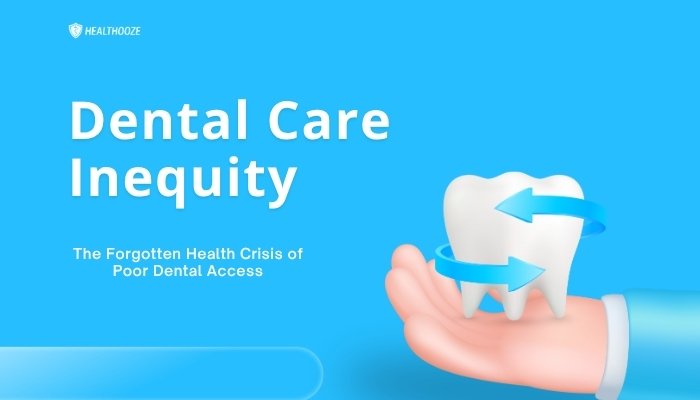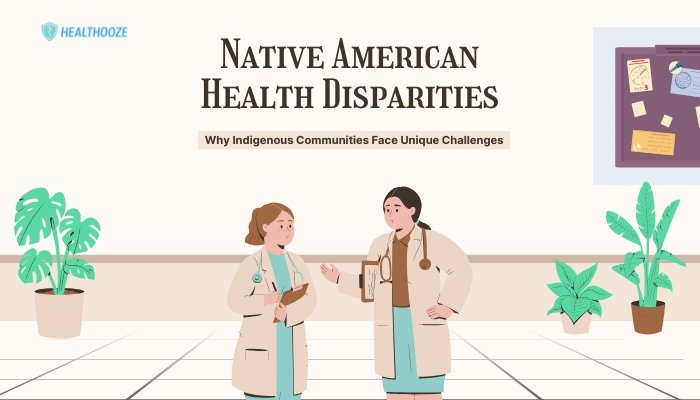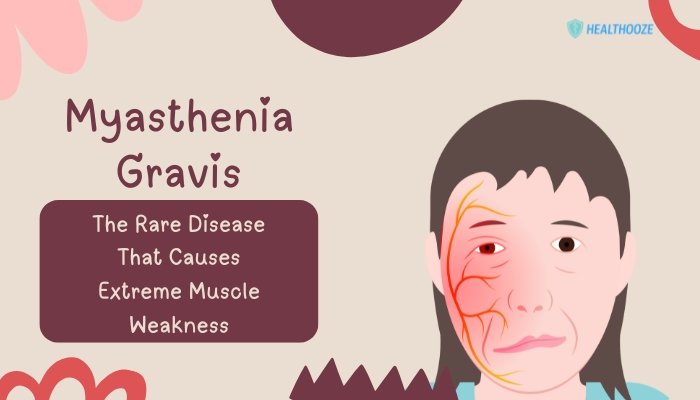Introduction
Rural America plays a key role in the national identity, with farmland, small towns, and close-knit communities spread across vast landscapes. Despite this cultural significance, rural regions often face distinct health care challenges.
One of the most visible problems is the closure of local hospitals. These closures have far-reaching consequences, affecting health care access, local economies, and overall quality of life. This article examines the impact of hospital closures on rural communities, focusing on why these closures happen, what consequences they bring, and how communities can adapt.
Rural hospitals once served as the frontline of health services in smaller towns, providing emergency care, primary care, and a variety of inpatient and outpatient treatments. In many communities, the local hospital is a critical hub that employs skilled workers, contributes to the local tax base, and fosters a sense of security.
When a rural hospital shuts its doors, the loss extends beyond medical care; residents often experience higher unemployment rates and longer travel times for basic services. This article explores the reasons behind these closures, the ripple effect they produce, and possible solutions to maintain essential health services in remote areas.
Defining Rural Health Care
Rural health care refers to medical services provided in smaller towns or sparsely populated areas, often a considerable distance from urban centers. These regions may only have a handful of health facilities, and in some cases, a single hospital. The term “rural” is defined differently by various agencies, but it generally involves lower population density and a greater distance from urban hospitals and specialists.
Geographic and Demographic Factors
- Geographic isolation: Residents must often travel long distances on rural roads to reach the nearest facility.
- Aging population: Rural communities frequently have a higher proportion of older adults, who typically require more health services.
- Limited public transportation: Buses, rideshare services, or other public transport options are scarce, forcing residents to rely on private vehicles or volunteer services.
Economic Constraints
- Higher poverty rates: Economic hardship can reduce the ability of local residents to pay for health services.
- Shrinking tax base: As younger generations move to urban centers, small communities lose tax revenue, making it harder to fund local institutions.
These contextual factors shape the environment in which hospitals operate. Understanding them is necessary for finding strategies to sustain health care services in rural areas.
Factors Leading to Hospital Closures
Rural hospital closures do not happen overnight. They often result from a combination of economic, political, and social challenges that gradually undermine the viability of these facilities.
Financial Strain
Health care financing in the United States hinges on reimbursement systems such as Medicare and Medicaid, private insurance, and out-of-pocket payments. Rural hospitals treat patients who often rely on government programs, which may reimburse at lower rates than private insurers. Additionally, many rural residents are uninsured or underinsured, leading to unpaid medical bills. Declining reimbursement rates and high rates of uncompensated care place a heavy financial burden on rural hospitals.
Key reasons for financial strain:
- Low patient volume, which reduces revenue
- High fixed costs for running imaging facilities, labs, and emergency rooms
- Limited bargaining power with insurers
- Reliance on Medicaid and Medicare reimbursements
Workforce Shortages
Rural hospitals often face shortages of physicians, nurses, and specialized staff. Recruitment in remote areas is difficult because of fewer career opportunities for spouses, limited school options, and fewer social activities. A chronic lack of qualified personnel can increase labor costs, require temporary staffing, and reduce the range of services offered.
Shifting Health Care Landscape
Healthcare has changed significantly in the last few decades. Larger medical systems have acquired smaller hospitals or outpatient clinics, consolidating services to larger facilities. This shift in health care delivery can leave rural hospitals disconnected from bigger networks, making it harder to remain financially stable. In addition, regulations and compliance requirements may be just as strict for a small rural hospital as they are for a large urban medical center, increasing administrative costs.
Insurance and Policy Changes
Federal and state policies can influence hospital closures. Changes in Medicare and Medicaid reimbursement methodologies, new health care reforms, or budget cuts can tighten the financial picture for hospitals that already operate on thin margins. Some communities also experience hospital management issues, including lack of planning or failure to adapt to technological changes.
Economic Consequences for Local Communities
When a rural hospital shuts down, the local economy feels an immediate jolt. Hospitals provide stable, often higher-paying jobs in communities that might have few employment options.
- Loss of Direct Employment
- Doctors, nurses, clerical workers, technicians, and administrators lose their positions.
- Support industries (vendors, pharmaceutical suppliers, laundry services) also experience reduced demand.
- Reduced Tax Revenues
- A closed hospital no longer contributes significant tax revenue, which can further strain public services such as schools or infrastructure.
- Property Value Decline
- Areas with limited health services may attract fewer new residents and businesses, which can drive down property values.
- Population Decline
- Younger families who want better health care options for children may relocate, further eroding the community’s workforce and tax base.
Spillover Effect on Small Businesses
Local shops, restaurants, and transportation services rely on traffic from hospital employees and visitors. With fewer people coming to town for hospital-related reasons, many small businesses struggle to stay afloat. This ripple effect can contribute to a cycle of economic decline, making it harder to reverse the losses in the community.
Access to Care Challenges
The closure of a hospital means more than just the absence of inpatient beds. Rural residents lose critical services that enable them to manage chronic conditions, respond to emergencies, and access preventive care.
Travel Times and Transportation
One of the immediate effects of a local hospital closure is the need to travel farther for both emergency and routine care. In urgent situations such as heart attacks or strokes, additional travel time can significantly affect patient outcomes. Chronic conditions like diabetes require frequent check-ups, creating a burden for those who must drive long distances. Limited public transportation in rural areas intensifies the problem, as many residents cannot afford regular travel.
Reduced Availability of Specialized Services
Some rural hospitals serve as points of access for specialized care, such as oncology, cardiology, or obstetrics. When these facilities close, patients must travel to regional medical centers for treatments like chemotherapy or specialized testing. This shift can lead to missed appointments or delayed medical attention, increasing the likelihood of complications.
Impact on Maternal and Child Health
Maternity care in rural communities is particularly vulnerable. Obstetrics units require a specific mix of equipment and specialized staff, which are expensive to maintain. Hospital closures can eliminate local labor and delivery units, forcing expecting mothers to drive long distances for prenatal checkups and childbirth. This challenge can result in fewer prenatal visits, increased labor risks, and heightened stress for expecting families.
Community Health Implications
A hospital plays an influential role in advancing public health initiatives, offering preventive screening programs, and hosting community outreach events. When it shuts down, the public health infrastructure deteriorates.
Chronic Disease Management
Chronic conditions like diabetes, heart disease, and hypertension demand regular monitoring and management. Local hospitals often facilitate diabetes education classes or heart failure clinics. Without these services, individuals may skip essential appointments, leading to complications that require costly emergency care later.
Mental Health Services
Rural areas frequently face limited mental health care options. Local hospitals sometimes offer outpatient mental health clinics or coordinate with visiting psychiatrists. When these facilities close, individuals struggling with conditions such as depression or substance use disorders may not receive professional help close to home. Higher rates of depression, substance misuse, and even suicide can follow when mental health services are scarce.
Preventive Care Gaps
Regular screenings for breast cancer, cervical cancer, and colon cancer can detect disease early. Rural hospitals often organize community events for vaccinations or cancer screenings. Closures reduce access to preventive measures, increasing the risk of late diagnoses and more advanced disease progression.
Emergency Services Impact
Emergency services are among the most visible losses when a rural hospital closes. Quick access to emergency care can be the difference between life and death.
- Longer Ambulance Response Times: Emergency medical services may need to cover larger areas, leading to slower response and transport times.
- Fewer Local Trauma Resources: Small hospitals often stabilize trauma patients before transferring them to bigger centers. With no local facility available, patients must travel long distances in critical conditions.
- Delayed Care for Life-Threatening Conditions: Timely treatment is vital in cardiac events, strokes, accidents, and other emergencies. Extra minutes or hours on the road can worsen outcomes.
Impact on Volunteer Services
Many rural communities rely on volunteer emergency medical technicians and firefighters. Volunteers have limited resources and rely on a nearby hospital to handle critical treatments once they arrive on scene. When the closest hospital is 30, 40, or even 50 miles away, the volunteers face increased pressure and patients face greater risk.
Telehealth and Technology
Telehealth services have expanded in recent years, bridging some gaps created by rural hospital closures. Using videoconferencing, secure messaging, and remote monitoring tools, health professionals can offer consultations and follow-up appointments. While telehealth cannot fully substitute in-person care for emergencies or complex procedures, it can help with routine follow-ups, mental health check-ins, and certain specialty referrals.
Advantages of Telehealth
- Convenience: Patients can consult with doctors from home, saving time and travel costs.
- Reduced Wait Times: Virtual appointments can decrease wait times, especially for chronic disease management.
- Access to Specialists: Patients can connect with specialists located hours away without leaving their community.
Barriers to Telehealth Adoption
- Limited Broadband Access: Reliable internet connections can be scarce in rural areas.
- Technological Literacy: Some older adults may not feel comfortable using digital devices or platforms.
- Reimbursement and Licensing: Coverage policies for telehealth vary by state and insurer, affecting its adoption and profitability.
Possible Solutions and Policy Approaches
Policymakers, health professionals, and community members have proposed various strategies to address hospital closures and their impacts.
- Critical Access Hospital (CAH) Designation
- Rural hospitals meeting specific criteria can receive enhanced Medicare reimbursement. This boosts financial stability and ensures basic services remain available.
- Community Health Centers (CHCs)
- CHCs offer outpatient services such as primary care, dental care, and behavioral health on a sliding fee scale. They can replace some functions of a closed hospital, though they typically do not provide acute inpatient care.
- Mobile Clinics
- Vehicles equipped with examination rooms and basic lab capabilities can travel to underserved areas on a scheduled basis. These clinics bring vital screenings and preventive services closer to people’s homes.
- State and Federal Grants
- Government programs can issue grants for infrastructure, staffing, and equipment. This funding can help modernize facilities or launch initiatives like telehealth.
- Regional Networks
- Rural hospitals can form networks with larger hospital systems to share resources, access training, and negotiate better rates with suppliers.
- Policy Revisions
- Adjustments to Medicare and Medicaid reimbursement, reduced administrative complexity, and targeted subsidies for rural providers could help stabilize local hospitals.
Future Outlook
The future of rural health care in America depends on innovative strategies, flexible policies, and community engagement. Many experts believe new care models will emerge that incorporate virtual consultations, mobile units, and targeted clinics to fill gaps left by hospital closures. Ongoing research on health outcomes and economic factors will guide policy changes, and local leaders must collaborate to identify the best solutions for their region.
Technological Innovations
- Remote Monitoring Devices: Wearable devices can track vital signs and alert providers when a patient’s condition worsens.
- AI-Based Triage Systems: Artificial intelligence could help paramedics triage patients more effectively in remote locations.
- Remote Surgery Assistance: Specialists can guide less experienced surgeons remotely through robotic surgery platforms, though this depends on high-speed internet.
Importance of Community Engagement
Communities can play a proactive role by:
- Attending local health boards and town hall meetings
- Advocating for state and federal support
- Supporting local tax initiatives that fund health services
- Partnering with educational institutions to train and retain local staff
Conclusion
Rural hospital closures are a growing concern that extends beyond mere financial loss. These facilities represent a critical resource for timely emergency care, routine check-ups, and specialized treatments. Their impact touches every sector of local life, from economic vitality to public health and safety. By the time a hospital closes, the community already faces multiple stressors, including reduced access to care, workforce limitations, and economic decline.
However, there are potential solutions. Policy reforms that prioritize rural health can stabilize funding, while alternative care models like telehealth and mobile clinics can fill certain gaps. Strengthening local leadership and community engagement is key to ensuring that essential health services remain accessible. Moving forward, a mix of targeted policy changes, innovative technology, and grassroots initiatives can help keep rural health care alive. By confronting these challenges, rural communities can protect their residents’ health and ensure that their towns remain vibrant places to live and work.
Table: Common Factors Contributing to Rural Hospital Closures
| Factor | Impact on Rural Hospitals |
| Declining Patient Volume | Lower revenue from fewer admissions and outpatient visits |
| Reduced Reimbursement Rates | Financial strain from Medicare/Medicaid shortfalls and high uncompensated care |
| Workforce Shortages | Difficulty recruiting qualified staff leads to increased costs and service limitations |
| Regulatory Requirements | High administrative costs and strict compliance rules for small facilities |
| Limited Access to Capital | Inability to invest in new technology, equipment, or facility upgrades |
| Shifts in Health Care | Consolidation of services and movement of patients to bigger urban or regional centers |
References
- Smith JC. Analyzing rural health challenges in the United States. Rural Health J. 2021;18(2):121–129.
- Williams R. Financial stability in rural hospitals: A comparative study of reimbursement models. Health Econ Rev. 2020;12(1):33–39.
- Johnson T, Garza M. Workforce recruitment issues in remote areas: The impact on health care delivery. Am J Rural Med. 2022;5(4):55–64.
- Miller F. The economic spillover effect of hospital closures in small communities. J Community Dev. 2019;11(3):98–107.
- Brown L, Reed P. The relationship between hospital closures and local population decline. Popul Health Manag. 2020;13(2):111–118.
- Anderson P, Gupta R. Investigating maternal and child health outcomes in regions lacking obstetric units. J Womens Health. 2021;17(1):45–52.
- Martin K. Emergency care access and response times in rural settings. Emerg Serv Res. 2018;9(4):210–216.
- Davis E, Moore P. Telehealth barriers and opportunities for rural communities. Telemed J. 2021;14(2):66–73.
- Wilson M, Turner J. Strategies for sustaining critical access hospitals. Health Policy Today. 2020;16(3):89–94.
- Long R. Strengthening community health centers: Policy implications and funding needs. Public Health Forum. 2019;22(2):105–110.
- Kennedy A, Sullivan B. Mobile clinic programs for underserved populations. J Rural Care. 2022;7(1):14–21.
- Hall J, Vincent A. The role of community engagement in rural health outcomes. Rural Health Pol. 2023;19(1):77–85.







